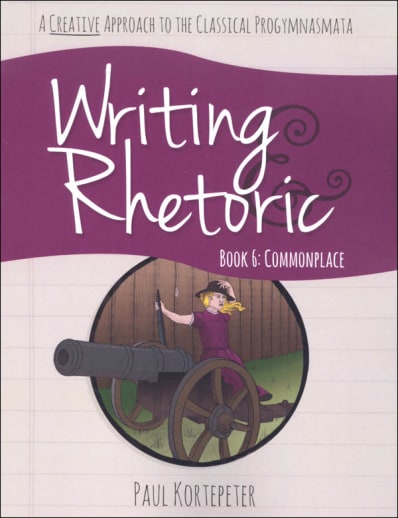The Student Books provide instruction and examples with plenty of space to write. This course introduces six-paragraph essays, supporting a thesis statement, arguments for/against, and inventing soliloquies to support an argument.
Writing & Rhetoric Book 6: Commonplace Student
Description
Writing & Rhetoric Book 6: Commonplace continues the development of the art of persuasive writing and oration. Students will learn to create six-paragraph essays that are arguments against the common vices of people and arguments in favor of common virtues. For example, cowardice and boasting are criticized while courage and humility are commended.
In addition to practicing skills they learned in earlier books, students will learn to:
* Write six-paragraph essays
* Support a thesis statement
* Argue against certain vices
* Argue for certain virtues
* Use comparison and contrast
* Introduce and conclude an essay
* Use a rhetorical device known as "the contrary
* Invent soliloquies to support an argument
* Deliver writing orally
* Revise writing
This course introduces six-paragraph essays, supporting a thesis statement, arguments for/against, and inventing soliloquies to support an argument.
| Product Format: | Paperback |
|---|---|
| Grades: | 5-8 |
| Brand: | Classical Academic Press |
| ISBN: | 9781600512773 |
| Length in Inches: | 11 |
| Width in Inches: | 8.5 |
| Height in Inches: | 0.625 |
| Weight in Pounds: | 1.65 |

